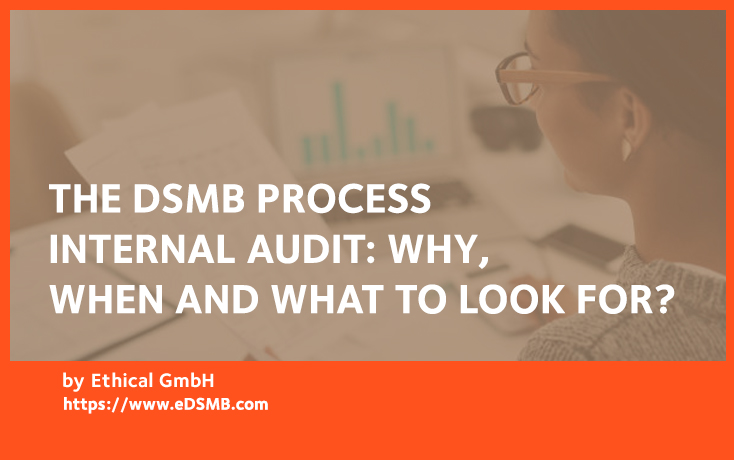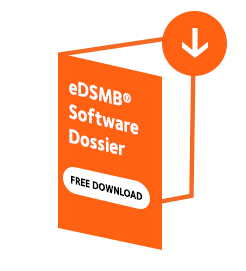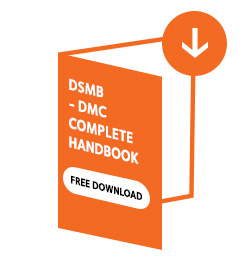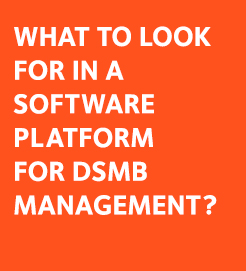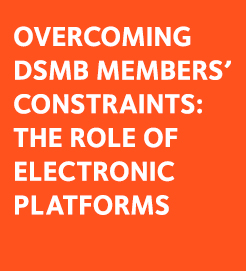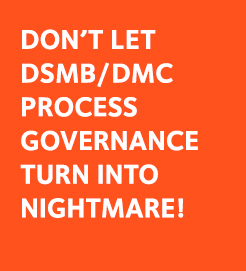Why is “inspection readiness” important? What should a sponsor look for when auditing a DSMB process? When should the audit be performed? We’ve asked Ethical’s Head of Quality Assurance, Dr Beat Widler, to share tips on how to best prepare for DSMB GCP inspection. The following checklist of 10 verification points, he says, will help secure adequate QA oversight of the DSMB process.
Why conductiong internal audits of a DSMB process?
The approval and marketing authorization of a new drug is an important decision made by health authorities that take substantial time to carefully review all the data provided by the sponsor. In addition, health authorities have the obligation to verify the quality of that data to confirm that it has been properly collected and analyzed. This verification is done by means of thorough inspections conducted on all aspects of the research, development and manufacturing of the candidate new drug prior to issuing the marketing authorization. In the development area, all aspects of the clinical trials are subject to inspection and sponsors usually conduct internal audits during the course of the trials to assess, and if needed correct, the different aspects of the trials conduct, including the DSMB process if one was used. Good auditing practices will guarantee a successful inspection and a timely approval of the drug.
When should an audit of the DSMB process be conducted?
Typically, a routine audit of the DSMB process and systems is performed when about 30 – 40% of the planned patients are randomized and at least two to three DSMB meetings have taken place. This allows to verify a sufficient amount of data (e.g., minutes, assessments and decisions) and should the audit identify deficiencies the sponsor still has time to implement successful Correctiver and Preventing Actions (CAPAs). Ad hoc audits may also be conducted at any time in case of suspicion of scientific / medical misconduct.
What are the main verification points of a DSMB audit?
- Competency of DSMB members, e.g. qualification, training on the trial protocol.
- Independence of DSMB members, e.g., review of Financial Disclosure Forms.
- Changes in composition of the DSMB and if changes have occurred review on how transition has been managed and documented.
- Availability and adequacy of the DSMB charter. It is for example specifically verified whether the frequency of DSMB meetings is aligned with the expected volume of incoming safety data over a given time period.
- Review of agenda and minutes of the DSMB to confirm adherence to the terms and conditions of the Charter.
- Documentation supporting decisions by the DSMB. This includes, for example, documentation of who has been voting and what the outcome of the vote was. If a sponsor representative serves as a member of the DSMB there must be documentation that this individual acted as per provisions of the Charter.
- Feedback shared with the sponsor must be in line with the Charter and sponsor must follow through on decisions of the DSMB.
- Verification that data protection laws / requirements have been adhered to. Specifically, if images, ECG tracings, etc. are shared with the DSMB members - either sent to the members or uploaded onto a system for review by the DSMB members - identifications linking the image, tracing, etc. to a trial participant, should not result in or lead to the (re-)personalization of the record.
- Safeguards to preserve the blind when safety data was unblinded. Evidence that such safeguards were effective i.e., blinding of blinded trial stakeholders such as sponsor, CROs, investigators, etc. was preserved and process applied is properly documented.
- Methodology and documentation of validation of computerized systems if the operations of the DSMB are supported by a project management application like eDSMB® including review of the life-cycle of computerized systems and related re-validation of systems.
External regulations, internal audits and health authorities inspections constitute a complete cycle of quality assurance that guarantees sound scientific and ethical conduct of drug development and manufacturing, preserving the safety of clinical trial participants and ensuring a positive risk-benefit balance for patients. ETHICAL is committed to participating in this cycle by strictly following regulations and by readily providing all the necessary tools and information for a successful DSMB and DSMB process inspection readiness.
DOWNLOAD NOW THE FREE DATA SAFETY MONITORING HANDBOOK
A single, integrated handbook regrouping various sources of information on when, why and how to set up and use DSMBs and DMCs.



